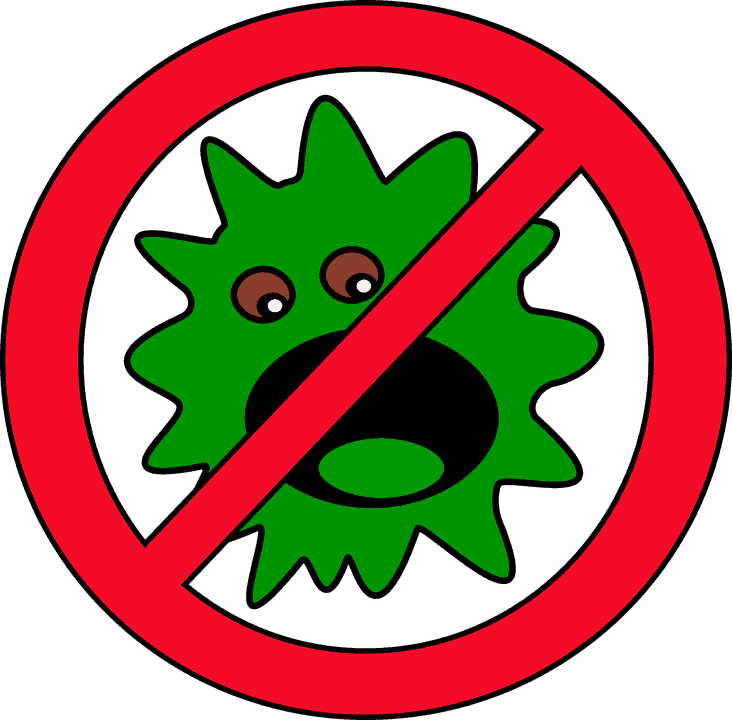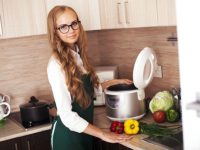Slow cooking brings out the best flavors of the food. But the low temperature of 165 to 200 degrees Fahrenheit requires cooking time to be considerably longer than traditional roasting or cooking at higher temperatures. A good quality slow cooker is what you need for this purpose, but: how safe is a slow cooker?
The convenience of slow cooking does not require permanent attention, there is no stirring necessary and food does not burn in the pot. For most dishes, especially soups and stews, you only have to put all the ingredients together into the cooker, set it and return at the end of the day, to a ready slowly cooked tasty dish.
How safe is a slow cooker?
APPLIANCE Safety
Some people wonder about the thought of how safe is a slow cooker when leaving it unattended for many hours cooking food in the kitchen. But this is exactly what slow cookers are made for. They do not create as much heat as an open flame or an oven.
- Make sure you buy a quality slow cooker made by a reputable manufacturer that has product safety certificates.
- Use the item only as instructed in the manual.
- Observe common safety precautions like placing the slow cooker on top of a heat-resistant surface away from flammable items.
Slow cooking is safe as long as you follow the safe cooking instructions. Read the manual of the slow cooker and familiarize yourself with the respective model.
FOOD Safety
Foodborne diseases can occur when certain foods such as seafood, poultry or meat are cooked incorrectly. Too low cooking temperatures or too short cooking times may not be sufficient to kill off pathogens. The result could be food poisoning with symptoms like diarrhea and vomiting or worse. In this case, consult a doctor!
Slow cookers heat food to a temperature of 165 to 200 degrees Fahrenheit. This will slowly simmer the food at just below the boiling point, but at a hot enough temperature to kill off bacteria and germs as recommended by the FDA Safe minimum internal temperatures.
So the slow cookers’ lengthy cooking time together with the heat inside the pot will destroy disease-causing bacteria. It is a safe way to prepare food and the results are healthy tasty dishes.
Some foods’ different characteristics may require special cooking, so it is advisable to learn about the food you are going to cook and how you should safely prepare each ingredient.
Some green beans and raw kidney beans contain Phytohaemagglutinin, a kind of Protein that can be toxic to humans. Phytohaemagglutinin breaks down at a boiling temperature of 212 F.
Boil beans thoroughly before putting them into a slow cooker!
How to safely slow cook?
- Always thaw meat before starting to slow cook, don’t use the slow cooker for thawing.
- Avoid putting raw meat into the slow cooker and have it sit for delayed timer cooking.
- Don’t open the lid to check on the food too often, every time the lid is opened add some cooking time.
- Limit the keep warm function to a maximum of 3 to 4 hours. After that put leftover food into the fridge.
- Do not use your slow cooker for warming up dishes.
Kitchen Hygiene and Safety
- Handling food carefully can reduce the risk of foodborne illness.
- Germs such as Salmonella, Listeria, Campylobacter, or other microorganisms are spread when beef, pork, poultry, and seafood are not stored properly.
- Particularly small children, pregnant women, the elderly, and people with a weakened immune system may experience health complications such as sour stomach and intestinal symptoms as a result.
- To enjoy fish, poultry, meat, and egg dishes without fear, a few simple rules should be considered when buying, storing, and preparing food.
Problematic food
Mainly raw or inadequately cooked meat and poultry dishes, seafood, raw eggs, and delicatessen salads can become a health risk when not handled properly and could provide an ideal breeding ground for microorganisms. However, germs can also be transferred from plant foods, for example from ground-grown vegetables, salads or berries.
Purchase and storage
The cold chain must not be interrupted by shopping for perishable food. These products should quickly go into an icebox and at home into the fridge or freezer. Store delicate foods such as ground beef at a temperature below 39° Fahrenheit in the refrigerator and consume before the expiry date. Raw, unheated food should be stored separately from already prepared or cooked food.
A temperature below 39°F is best to discourage bacterial growth in refrigerated foods.
Preparation
Frozen meat, fish, or poultry that is left in the refrigerator to thaw, should be put in a strainer. This prevents the food to be in contact with the thawing water which is a breeding ground for germs. Care should also be taken to ensure the thawing water does not get in contact with other food.
Minced meat, pork, poultry, and fish must be thoroughly cooked until the meat is no longer red, raw or bloody inside. Food containing raw eggs or mayonnaise, as well as cold dishes, should be left in the refrigerator for a maximum of 24 hours after preparation.
Kitchen and workplace hygiene
Avoid Cross-Contamination; When handling any kind of food, washing hands often is the most important between workflows. Work surfaces, cutting boards, and utensils that were in contact with poultry, meat, and seafood should be cleaned immediately with hot water and dishwashing detergent. The best is to use separate cutting boards and plates.
Cloths, dishwashing brushes, and kitchen sponges should be changed regularly and cleaning aids should be washed with hot water. To sanitize kitchen utensils it is best to soak them at a temperature of 170 degrees Fahrenheit for at least 30 seconds.
Five basic hygienic rules
The World Health Organization (WHO) advises Five Keys to Safe Food
- Keep hands and work surfaces clean in the kitchen
- Separate raw and cooked food
- Cook food carefully
- Store food at “safe” temperatures
- Use clean water and clean initial products
- Where Are Tomatoes Native To? - August 1, 2022
- Are Organic Chickpeas Better? - July 26, 2022
- How Being Vegan Helps Climate Change - July 24, 2022




